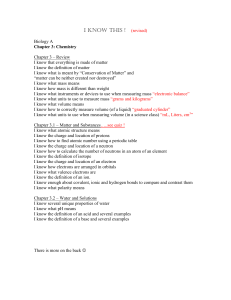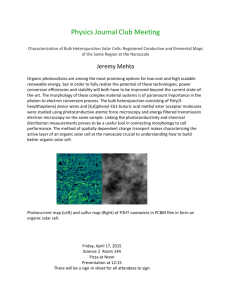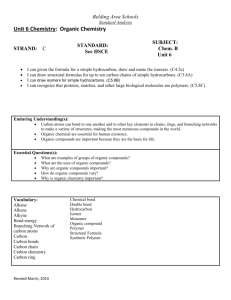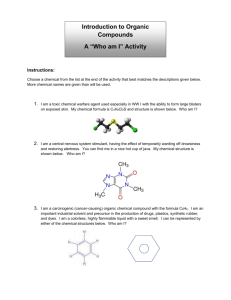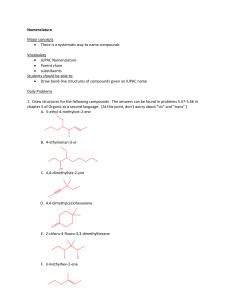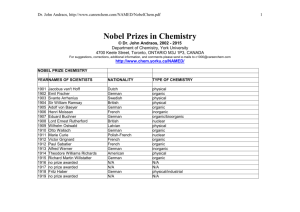S. Alimpiev - C.R. ENEA Frascati
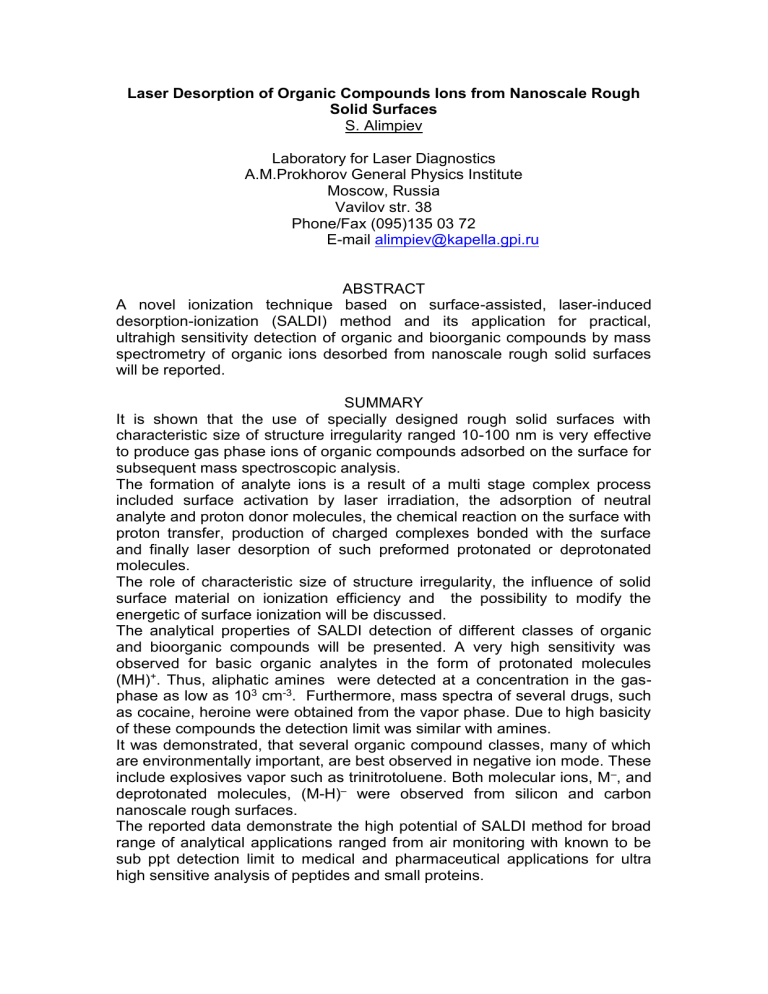
Laser Desorption of Organic Compounds Ions from Nanoscale Rough
Solid Surfaces
S. Alimpiev
Laboratory for Laser Diagnostics
A.M.Prokhorov General Physics Institute
Moscow, Russia
Vavilov str. 38
Phone/Fax (095)135 03 72
E-mail alimpiev@kapella.gpi.ru
ABSTRACT
A novel ionization technique based on surface-assisted, laser-induced desorption-ionization (SALDI) method and its application for practical, ultrahigh sensitivity detection of organic and bioorganic compounds by mass spectrometry of organic ions desorbed from nanoscale rough solid surfaces will be reported.
SUMMARY
It is shown that the use of specially designed rough solid surfaces with characteristic size of structure irregularity ranged 10-100 nm is very effective to produce gas phase ions of organic compounds adsorbed on the surface for subsequent mass spectroscopic analysis.
The formation of analyte ions is a result of a multi stage complex process included surface activation by laser irradiation, the adsorption of neutral analyte and proton donor molecules, the chemical reaction on the surface with proton transfer, production of charged complexes bonded with the surface and finally laser desorption of such preformed protonated or deprotonated molecules.
The role of characteristic size of structure irregularity, the influence of solid surface material on ionization efficiency and the possibility to modify the energetic of surface ionization will be discussed.
The analytical properties of SALDI detection of different classes of organic and bioorganic compounds will be presented. A very high sensitivity was observed for basic organic analytes in the form of protonated molecules
(MH) + . Thus, aliphatic amines were detected at a concentration in the gasphase as low as 10 3 cm -3 . Furthermore, mass spectra of several drugs, such as cocaine, heroine were obtained from the vapor phase. Due to high basicity of these compounds the detection limit was similar with amines.
It was demonstrated, that several organic compound classes, many of which are environmentally important, are best observed in negative ion mode. These include explosives vapor such as trinitrotoluene. Both molecular ions, M deprotonated molecules, (M-H)
–
–
, and
were observed from silicon and carbon nanoscale rough surfaces.
The reported data demonstrate the high potential of SALDI method for broad range of analytical applications ranged from air monitoring with known to be sub ppt detection limit to medical and pharmaceutical applications for ultra high sensitive analysis of peptides and small proteins.



